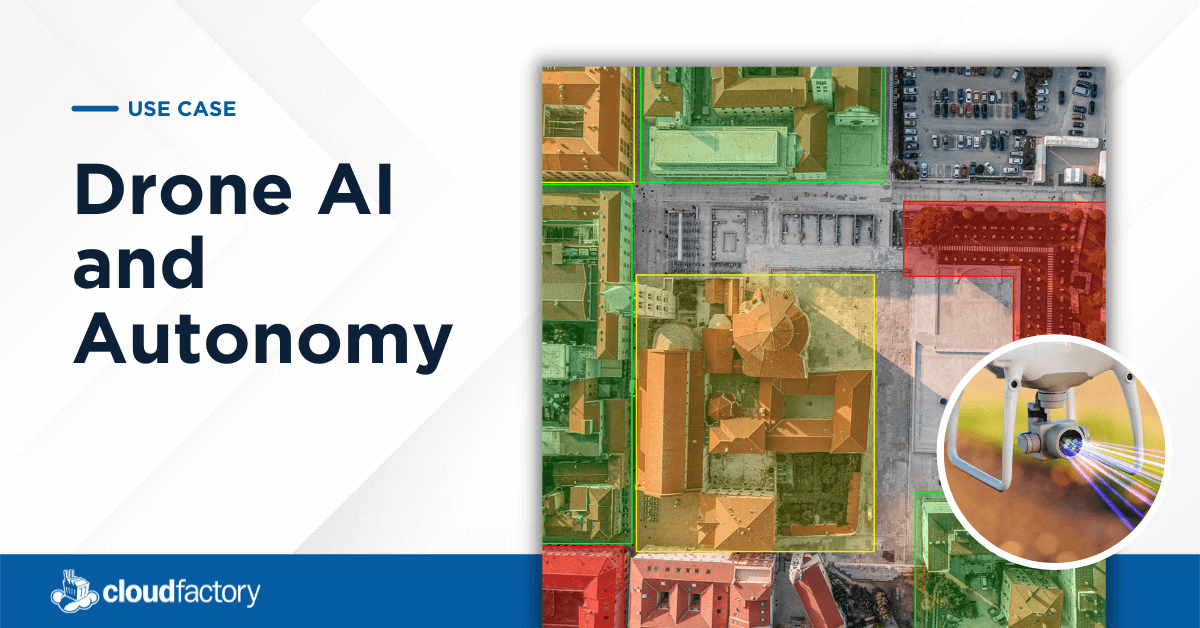We want to thank the excellent team at Elon University for hosting the inaugural Drone Day. Elon Drone Day brought together over 150 FAA safety officials, NC Department of Transportation aviation leaders, drone delivery specialists, video storytellers, and others to share their knowledge and expertise. We sent a team to learn more about how drones are being used today and where autonomy will play in 2022 and beyond. Here's what our team had to say:
Mark Sears, CEO CloudFactory
Drone Day was a day to learn and contribute to the fast-changing and fascinating world of drones. CloudFactory is helping tech teams with autonomous drones and contributing to making them a reality for many use cases such as drone delivery.
North Carolina is continuing its first in-flight tradition by being a leader in the drone space. Today, over 150 people from academics, the FAA, NCDOT, and tech companies joined together to understand and shape the future of drones.
Overall, two things stood out to me on Drone Day:
- The real-world application for drones is increasing and exploding, but unfortunately, so are the regulations. The problem is safety - human pilots are not enough. They don’t have the data to make real-time decisions with a vehicle that is often flying many football fields away from them. Drone are simply prone to errors.
- Autonomy is critical. Autonomous drones that incorporate AI make the behavior of the aircraft predictable. Almost any operation in nearly every condition can be repeatable and safe with enough data and a standard approach. Autonomy is the key to scaling drone operations by giving regulatory bodies the confidence they need. The key to making drones autonomous is high-quality data at scale, and that is what we do better than anyone else. Being hands-on today with drone practitioners and regulators was a great reminder of the value CloudFactory can bring.
Paul Christianson, Vice President Strategic Industries
My main takeaway has me contemplating how drone autonomy may possibly speed up the regulatory process:
The Drone industry is currently waiting on the FAA to build out a framework for drones just like the NHTSA and DMV have done for motor vehicles. In North Carolina specifically, the NCDOT and FAA are placing lots of regulations on Visual Line of Sight drones (VLOS) with remote operations.
This left me wondering if the application of autonomy could leap-frog these current regulations and be a better way to get drones safely operating rather than going through a prolonged remote operations phase for the industry. Due to the nature of flying drones, pilots are prone to errors, but autonomy makes drones more reliable and predictable, primarily when they are fueled with high-quality data. Perhaps scaling drone autonomy will give regulatory bodies more confidence in allowing drones into the market more quickly than they are on pace for.
Neheet Trevedi, Strategic Account Executive Drones
Here is my main takeaway from the day:
Drone operators and drone delivery companies will need to continue to develop “detect and avoid” technology that will enable companies to operate Beyond Visual Line of Sight drones (BVLOS), enabling one-to-many pilots and ultimately scale.
Right now, drone companies require one pilot for every drone because drones don't talk to each other, so they don't “know” where the other one is. As such, drones are at risk of running into each other or other airplanes or helicopters, and even things like hang gliders, air balloons, birds, and power lines.
Of course, the FAA wants to do whatever it can to ensure drones are safe and ensure companies are showing this clearly in their applications. However, even when the FAA deploys the remote ID system for drones to self-identify, detect and avoid will still be necessary for things like birds and hot air balloons, and other objects that do not identify their location.
In sum, Cloudfactory will ultimately help companies develop detect and avoid systems to enable them to get FAA certification and eventually scale. This will be a huge competitive advantage, and I’m excited to be a part of it.
Lynn Steinberg, Marketing Content Writer Strategic Industries
Below are my two main takeaways from Drone Day:
- The roadmap to drone autonomy is slow but definitely steady. The interest and technology are there, but rules and regulations must be in place to keep the public safe and secure. As those rules and regulations develop, we will see innovation expand and eventually look up to the sky to see safe, environmentally friendly, and autonomous drones transporting medicine, medical supplies, food, and retail goods within our communities. CloudFactory will contribute to this innovation by providing high-quality data at scale, which is something to be proud of.
- As a writer, my imagination often runs wild, but the application of drones leaves little to the imagination. We will see drones play a critical part in bridge and roof inspections, deliveries, search and rescue operations, agriculture, dirty and dangerous jobs, and even competitive racing!
Learn how CloudFactory supports aerial data processing for the drone industry here:



